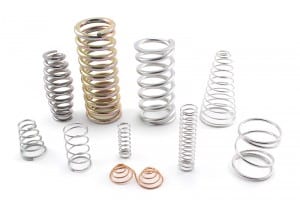 In order for a compression spring application to perform properly in a device, it must meet an expected force at a particular height. The importance cannot be understated—measuring compression springs are a design function necessary to meet a device’s application requirements. That device could be a retractable pen, an automobile’s suspension, a mining or oilfield drill, a laptop, tablet, or computer keyboard, even a soap dispenser.
In order for a compression spring application to perform properly in a device, it must meet an expected force at a particular height. The importance cannot be understated—measuring compression springs are a design function necessary to meet a device’s application requirements. That device could be a retractable pen, an automobile’s suspension, a mining or oilfield drill, a laptop, tablet, or computer keyboard, even a soap dispenser.
There may be no other mechanical device more indispensable than the spring, of which the compression spring sits at the top of the heap. It is by far the most common type of spring, with countless applications. Compression springs are those familiar coiled springs that get shorter when squeezed, or as the name suggests when compressed. It is when compressed that they provide resistance or absorb force, and in doing so create the required energy to carry the load. They can be used as a shock absorber, vibration damper, a pure energy accumulator, or a force generator.
Compression Spring Options
Compression springs are manufactured in a variety of configurations, shapes and sizes depending on the application. Most common are the conical shape in which the radius decreases at the end of the spring, convex or hourglass shape that tapers at the center, concave or barrel shape where the spring is wider at the center, and the reduced ended compression spring that is straight across the center coils and taper at the ends.
The material used to form springs can vary. The choice relates to the application and the environment in which it is intended. The majority of springs are made from spring steel, a cold-drawn carbon steel alloy. Other materials used to form springs are stainless steel, nickel alloys, copper alloys, and cobalt alloys and plastics.
A defining characteristic of a compression spring is the visible spaces between the coil when loaded or unloaded. For a compression spring to operate effectively, its coils must never be in contact with each other. If the coils are touching the load is either too heavy or the spring has failed. In the case of the latter, it’s a sign that the service life of the spring has ended. If the load is too heavy, more than likely it’s related to its design and that the necessary measurements were not calculated for the applications.
Measurement of Compression Springs
To fulfill design specifications for applications or to produce replacement parts, a compression spring is measured by its dimensions. Calculating the expected force at a particular height is the key to measuring compression springs. A compression spring’s dimensions are measured by Outer Diameter (OD), Inner Diameter (ID), Free Length, Wire Diameter, and Total Coil.
Dial calipers are best to get an exact measurement. For outer diameter readings, the calipers are placed on the outside of the coil’s width. Measure the inner diameter by placing the calipers on the inside of the coil’s width. ID can also be calculated by a formula: ID = OD – 2D (where 2d is two-wire diameters). Free length is defined as the full length of the spring when uncompressed. Merely place the calipers or ruler across the full length of the spring to measure. Wire diameter is the measurement of the actual width of the wire. The total coil count is accomplished by counting each full coil rotation and the remainder of the last coil.
Compression springs have many applications across many industrial sectors. Common and versatile, they are designed to efficiently store energy when a load is applied. A spring’s dimension affects its rate, travel, capacity and how efficiently it stores energy. Measuring compression springs are a necessary step to fulfill the design specifications of spring applications.
If you’re in the market for custom compression springs feel to check out our available options or contact us today!

